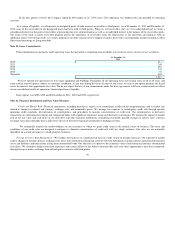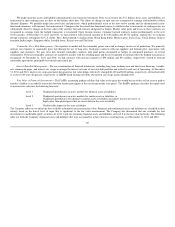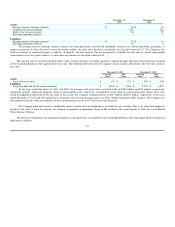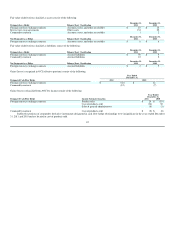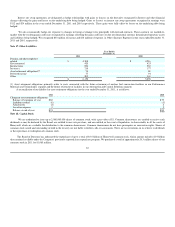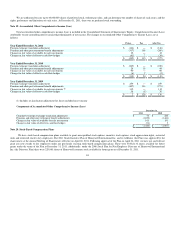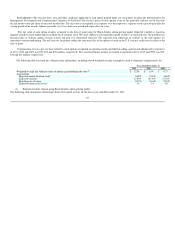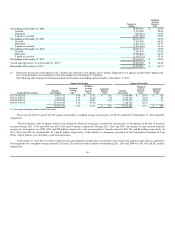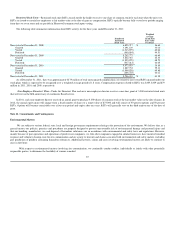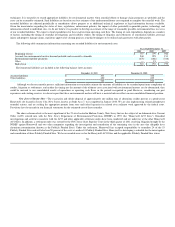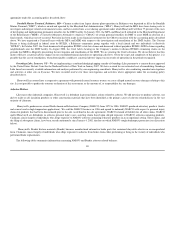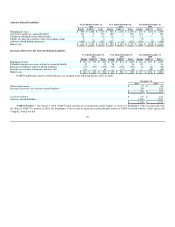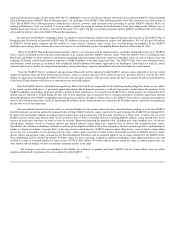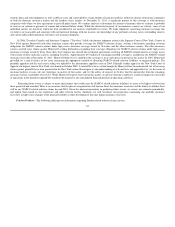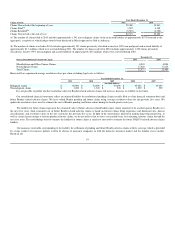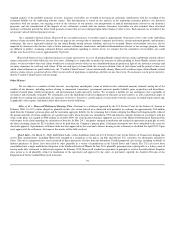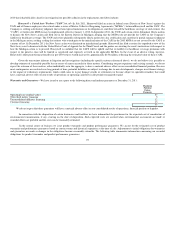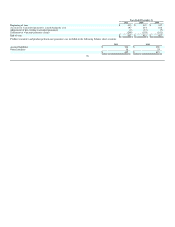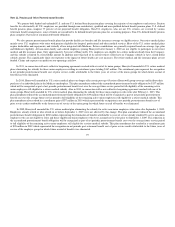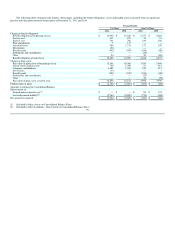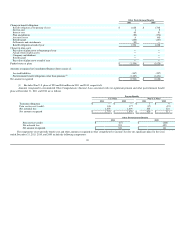Honeywell 2011 Annual Report Download - page 92
Download and view the complete annual report
Please find page 92 of the 2011 Honeywell annual report below. You can navigate through the pages in the report by either clicking on the pages listed below, or by using the keyword search tool below to find specific information within the annual report.
appropriate under the accounting policy described above.
Dundalk Marine Terminal, Baltimore, MD—Chrome residue from legacy chrome plant operations in Baltimore was deposited as fill at the Dundalk
Marine Terminal ("DMT"), which is owned and operated by the Maryland Port Administration ("MPA"). Honeywell and the MPA have been sharing costs to
investigate and mitigate related environmental issues, and have entered into a cost sharing agreement under which Honeywell will bear 77 percent of the costs
of developing and implementing permanent remedies for the DMT facility. In January 2011, the MPA and Honeywell submitted to the Maryland Department
of the Environment ("MDE") a Corrective Measures Alternatives Analysis ("CMAA") of certain potential remedies for DMT to assist MDE in selection of a
final remedy, which has not yet occurred. Provision has been made in our financial statements for the CMAA consistent with the accounting policy described
above. We have negotiated a Consent Decree with the MPA and MDE with respect to the investigation and remediation of the DMT facility. The Consent
Decree is being challenged in federal court by BUILD, a Baltimore community group, together with a local church and two individuals (collectively
"BUILD"). In October 2007, the Court dismissed with prejudice BUILD's state law claims and dismissed without prejudice BUILD's RCRA claims regarding
neighborhoods near the DMT facility. In August 2008, the Court held a hearing on the Company's motion to dismiss BUILD's remaining claims on the
grounds that MDE is diligently prosecuting the investigation and remediation of the DMT. We are awaiting the Court's decision. We do not believe that this
matter will have a material adverse impact on our consolidated financial position or operating cash flows. Given the scope and complexity of this project, it is
possible that the cost of remediation, when determinable, could have a material adverse impact on our results of operations in the periods recognized.
Onondaga Lake, Syracuse, NY—We are implementing a combined dredging/capping remedy of Onondaga Lake pursuant to a consent decree approved
by the United States District Court for the Northern District of New York in January 2007. We have accrued for our estimated cost of remediating Onondaga
Lake based on currently available information and analysis performed by our engineering consultants. Honeywell is also conducting remedial investigations
and activities at other sites in Syracuse. We have recorded reserves for these investigations and activities where appropriate under the accounting policy
described above.
Honeywell has entered into a cooperative agreement with potential natural resource trustees to assess alleged natural resource damages relating to this
site. It is not possible to predict the outcome or duration of this assessment, or the amounts of, or responsibility for, any damages.
Asbestos Matters
Like many other industrial companies, Honeywell is a defendant in personal injury actions related to asbestos. We did not mine or produce asbestos, nor
did we make or sell insulation products or other construction materials that have been identified as the primary cause of asbestos related disease in the vast
majority of claimants.
Honeywell's predecessors owned North American Refractories Company (NARCO) from 1979 to 1986. NARCO produced refractory products (bricks
and cement used in high temperature applications). We sold the NARCO business in 1986 and agreed to indemnify NARCO with respect to personal injury
claims for products that had been discontinued prior to the sale (as defined in the sale agreement). NARCO retained all liability for all other claims. NARCO
and/or Honeywell are defendants in asbestos personal injury cases asserting claims based upon alleged exposure to NARCO asbestos-containing products.
Claimants consist largely of individuals who allege exposure to NARCO asbestos-containing refractory products in an occupational setting. These claims, and
the filing of subsequent claims, have been stayed continuously since January 4, 2002, the date on which NARCO sought bankruptcy protection (see discussion
below).
Honeywell's Bendix friction materials (Bendix) business manufactured automotive brake parts that contained chrysotile asbestos in an encapsulated
form. Claimants consist largely of individuals who allege exposure to asbestos from brakes from either performing or being in the vicinity of individuals who
performed brake replacements.
The following tables summarize information concerning NARCO and Bendix asbestos related balances:
89


